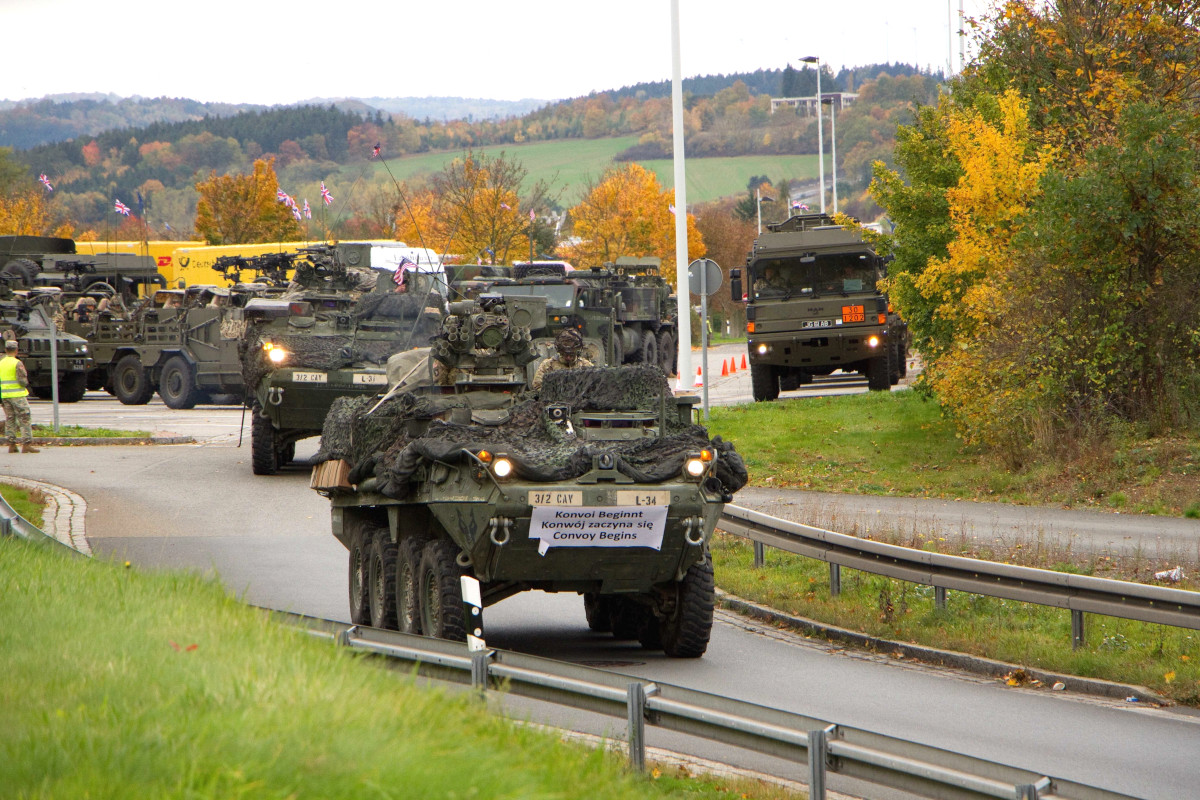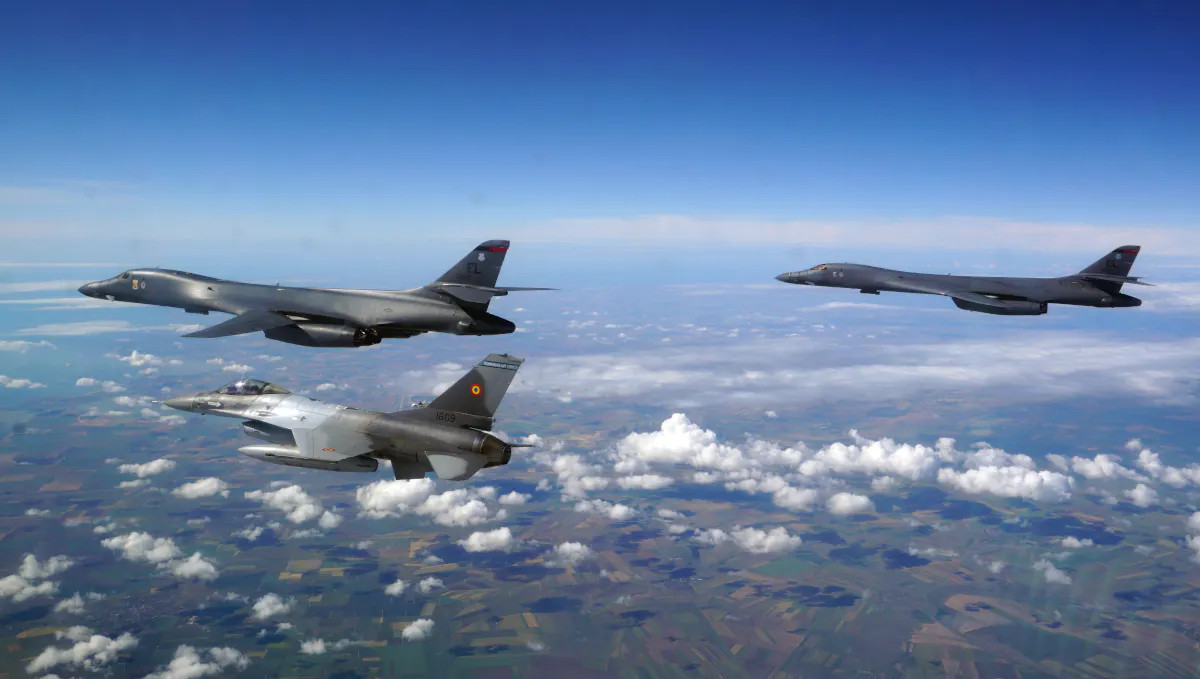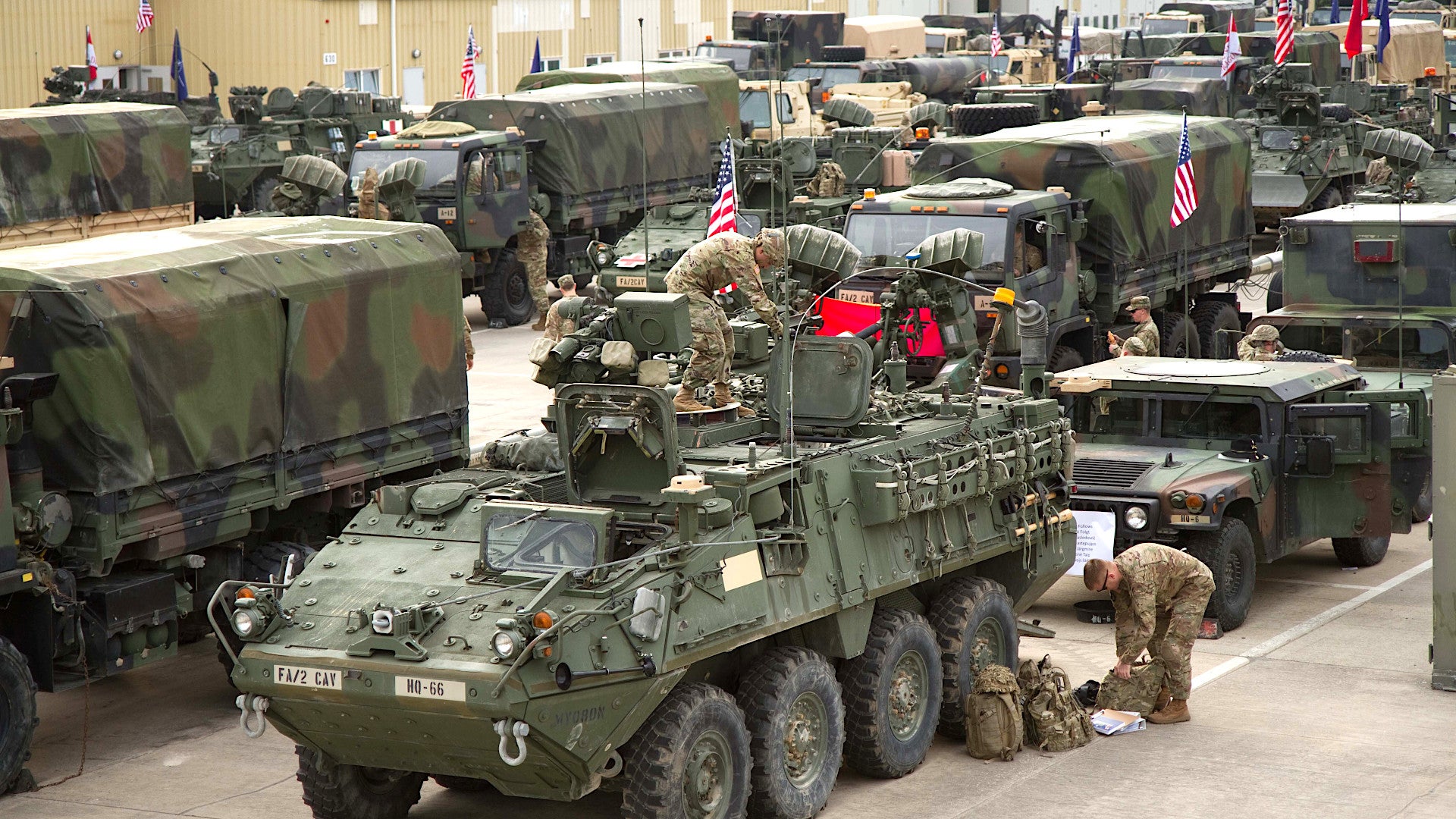The Pentagon has offered the first real details about its plans to withdraw approximately 11,900 personnel from Germany, 6,400 of which will return to the United States. The remaining 5,400 will relocate to other countries as part of a larger force posture shift that has an increased emphasis on activities in Poland and the Black Sea region.
Secretary of Defense Mark Esper, together with Vice Chairman of the Joint Chiefs of Staff Air Force General John Hyten and Air Force General Tod Wolters, who is head of U.S. European Command (EUCOM) and NATO’s Supreme Headquarters Allied Powers Europe (SHAPE), offered the new information about the withdrawals during a press conference on July 29, 2020. President Donald Trump had first announced plans to trim back U.S. forces in Germany in June 2020. At present, there are approximately 36,000 American service members in that country across a number of major bases.
Of the 6,400 troops that the United States now plans to pull out of Germany and send back to the United States, around 4,500 will come from the U.S. Army’s 2nd Cavalry Regiment, which is presently based at Rose Barracks in Vilseck, Germany. Despite its name, this unit is a brigade-sized Stryker wheeled armored vehicle-equipped infantry force and is presently the Army’s only maneuver combat unit forward-deployed anywhere in Europe.

The Pentagon did not offer any other specific details about the remaining 1,900 personnel that would be heading back to the United States or the units they’re assigned to.
The 5,400 additional troops that would move to other locations within Europe includes the U.S. Air Force’s 480th Fighter Squadron, which would relocate to Italy, very possibly to Aviano Air Base in that country. The 480th, assigned to the 52nd Fighter Wing, is presently the service’s only fighter squadron in Germany and is operates F-16CJ/DJ Vipers out of Spangdahlem Air Base.

Another 2,000 troops will relocate to Belgium as part of the relocation of EUCOM headquarters, as well as that of Special Operations Command-Europe (SOCEUR) to the city of Mons.
Esper stressed that more than 24,000 U.S. troops will still remain in Germany and that the 6,400 personnel that will return to the United States will then immediately prepare for rotational deployments in Europe. The U.S. military, as a whole, especially the Army, had already significantly scaled back its permanent force posture in Europe in the late 2000s and increased the emphasis on sending units to the region on shorter, temporary deployments.
This trend somewhat reversed course after Russia illegally seized Ukraine’s Crimea region in 2014 and began directly supporting separatists in the eastern portion of that country fighting the government in Kyiv. However, rotating deployments remained a key feature of the increased force posture in response to the Kremlin’s actions. The Army had actually planned to demonstrate its ability to carry out a much more significant deployment of forces to Europe in response to a regional contingency as part of an exercise called Defender-Europe 20 earlier this year, but had to scale back those plans due to the COVID-19 pandemic.
Esper said that new rotational deployments following the withdrawals from Germany could lead to a general increase in the U.S. military’s force posture in Poland, which has been actively lobbying the Trump Administration to send more troops to its territory, and in the increasingly strategic Black Sea region. “Once Warsaw assigns a defense cooperation agreement and burden sharing deal as previously pledged, there are may be other opportunities as well to move additional forces into Poland and the Baltics,” he explained.
The Secretary of Defense also said that a forward element of the Army’s V Corps headquarters, which the service announced plans to stand up at Fort Knox in Kentucky earlier this year, could deploy to Poland in the future. General Wolters, the EUCOM and SHAPE commander, added that there are now discussions about relocating U.S. Africa Command (AFRICOM) and Special Operations Command-Africa (SOCAFRICA), which are both presently situated in Germany, out of the country, as well.

In addition to these other force posture announcements, the Pentagon said 2,500 personnel presently based at RAF Mildenhall in the United Kingdom would not be leaving there, despite previous plans to do so. The movement of those forces, including KC-135 aerial refueling tankers and special operations units, which had been slated to go to Spangdahlem, had already been pushed back to at least 2027 previously.
The shift in forces will help “strengthen NATO” and “deter Russia,” Secretary Esper said in his opening remarks. He also said that the larger force structure changes would help U.S. military forces in the region be better able to tackle a “new era of great power competition” as outlined in the 2018 National Defense Strategy. “The flexibility that this affords us certainly complicates a potential enemy against us & dramatically improves our operational capability to more effectively deter and defend,” Vice Chairman of the Joint Chiefs of Staff Hyten added.
There are, however, already concerns that the withdrawals could negatively impact the U.S. military’s ability to respond to contingencies in Europe and elsewhere. Beyond supporting operations in the immediate region, American bases in Germany are an important intermediate point for other activities, especially in the Middle East and Africa.
In addition, Esper said that the Pentagon had already been looking into shifting forces in Europe, but admitted that President Donald Trump had “accelerated” the plan. However, it’s hard not to see pulling troops out of Germany as being in part the result of long-standing animosity toward the country’s defense policy on the part of the Trump Administration and Trump himself, personally. “Germany is supposed to pay for it. Germany is not paying for it,” Trump told reporters separately after the Pentagon’s press conference. “We are reducing the force because they are not paying their bill. It’s very simple. They are delinquent.”
In particular, Trump and others in his administration have long criticized Germany’s failure to meet NATO’s two percent defense spending target, which is in place all members, with the exception of Iceland. Despite increases to its defense budget since 2014, Germany has still struggled with that goal for a variety of reasons, despite being one of the largest states, and the wealthiest in Europe, within the alliance. However, it is worth noting that this is a spending goal, not a hard requirement, and that most NATO members fail to meet this benchmark.
“Let’s be clear: I think Germany is the wealthiest country in Europe. Germany can and should pay more to its defense,” Esper said himself. “It should certainly meet the two percent standard, and I would argue go above and beyond that.”
Trump’s strong personal relationship with Poland’s Andrzej Duda may also have been a contributing factor. Last year, Duda publicly proposed letting the U.S. military establish a permanent base in his country, which he dubbed Fort Trump. The U.S. military already has a significant rotational presence in Poland.

Of course, it remains to be seen whether or not this withdrawal plan, which will be complex and costly to carry out, will come to fruition. Esper said that some movements could begin within weeks, but that others will take longer to complete. “It’ll take several billion dollars, I’d say single digits, but that will be spread out over time,” he added.
It’s very likely, given the magnitude of the plan, that it will stretch beyond the November 2020 U.S. presidential election. If Trump loses, the next president could easily reverse course.
“What we have right now is really a concept – a concept that we’ve shared with our allies, shared with the Congress, and we shared inside the department fairly widely,” Vice Chairmant of the Joint Chiefs of Staff Hyten said. “We now have to turn it into plans. As you turn into plans, we have a very structured process involving the Joint Staff, the office of the secretary, and the combatant commands and the services, to make sure we understand what those are, then we’ll lay in the costs.”
However, if this withdrawal does proceed as planned, it will significantly alter the U.S. military’s overall posture in Europe.
Contact the author: joe@thedrive.com

